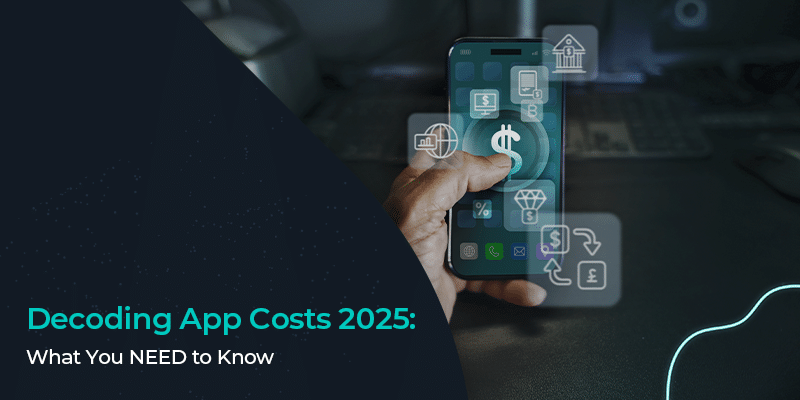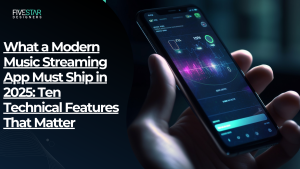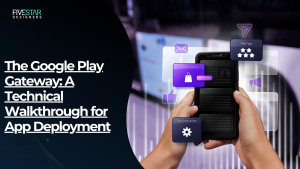Planning your next app development project? It might be a good idea to get a lay of the land beforehand. As 2025 unfolds, the price of mobile app development changes along with it due to the ever-evolving techniques, frameworks, and functionalities.
With many emerging features that are slowly becoming the norm like AI integrations, cloud computing, and blockchain systems, it’s easy to lose track of your budget and before you know it, you’ve exceeded your budget. Let’s find out what drives these development costs.
Breaking Down App Development Costs
The app development process is a lengthy journey and that journey is segmented into multiple parts. The cost is dictated by the time and manpower it takes to develop each segment. If you consult any app development agency, they will most likely estimate the entire project based on the following factors:
Complexity
Complexity is the most dominant variable in contributing to the price tag as it is directly proportional to the development cost. Simple everyday use apps like the weather app or calculator don’t require as much backend development as it would require to code a full-fledged AAA mobile app game.
1. Basic Apps (Minimalist Utility)
- Estimated cost: $10,000 – $50,000
- Core functionalities, no external integrations, minimal backend processing
- Examples: notes app, calculator, QR code scanner
2. Medium-Complexity Apps (E-commerce, Social, or Enterprise Solutions)
- Estimated cost: $50,000 – $150,000
- Multiple screens, third-party integrations, payment gateways, cloud-based storage
- Examples: Retail platforms, business productivity tools, fitness tracking applications
3. High-Complexity Apps (AI, VR, Blockchain, and Games)
- Estimated cost: $150,000 – $500,000+
- Real-time data processing, advanced AI algorithms, encrypted blockchain transactions
- Examples: Fintech platforms, gaming applications, streaming services with AI-driven recommendations
2. The Platform Dilemma
The platform you choose to code significantly impacts the cost as separate codebases have their own specific platform language. This means if you’re building an app in Swift for iOS you’re going to have to do it all over again in another framework for its Android counterpart doubling the development cost.
There is a way around this by opting for Cross-platform app development. However, in doing so app developers usually encounter optimization issues. Flutter is considered the best framework for iOS and Android app development in the market.
- iOS app development tends to be more predictable due to a controlled hardware ecosystem and streamlined UI guidelines.
- Android app development, however, requires rigorous optimization due to device fragmentation across various manufacturers, which can inflate testing and debugging costs.
- Hybrid and cross-platform solutions strike a balance but may not always match the performance of native applications.
3. Backend Infrastructure and APIs
Backend services account for a sizable amount of app development expenses. Ensuring safe authentication, effective data synchronization, and scalable cloud hosting solutions are all necessary to create a flawless user experience.
- Custom-built backend systems can be expensive but allow full control over data storage and processing.
- Third-party API integrations (like payment gateways, geolocation services, and social media logins) help expedite development but often come with licensing fees.
- Serverless architecture can reduce costs by eliminating the need for dedicated infrastructure while maintaining scalability.
4. UI/UX Design
Just like complex functionality, if you want a highly intuitive and eloquent app UI, the cost will be bumped up exponentially whereas a simple traditional UI with no uniqueness could spare you some bucks but it wouldn’t do you any good because users yearn for originality.
- Wireframing & prototyping: An initial phase that maps out the entire user flow before actual development begins.
- Custom animations & micro-interactions: Enhance engagement but require more development hours.
- Adaptive UI elements: Necessary to maintain consistency across various screen sizes and resolutions.
5. Security and Compliance
App security should not be taken lightly as it is not just your app that is at stake here, but your users and their data as well. This is why safety protocols and data privacy regulations keep evolving to evade cyberattacks. However, an ironclad security system requires coin.
- End-to-end encryption: Securing both ends when transporting data to make it harder to decipher.
- Regulatory compliance: GDPR, HIPAA, and other region-specific laws introduce additional development requirements.
- Penetration testing & vulnerability assessments: Simulating cyber attack conditions to see where the defenses are weak and iron out any complications to prepare pre-emptively.
6. Ongoing Maintenance and Updates
You’re not done once your app is ready and launched. This segment consists of app maintenance, software compatibility, bug fixes, security patches, and feature enhancements. Some app development companies include a certain period of maintenance in their packages while some charge extra for it.
- Bug fixes & OS updates: Ensuring app stability as Apple and Google roll out new versions.
- Performance monitoring: Continuous tracking of app analytics for optimization.
- New feature rollouts: Scaling the app with updated functionalities based on user feedback.
Final Verdict
To sum it all up, the price, as always depends on what kind of app you have in mind. Certain factors like complexity, platform, backend, UX/UI design, security compliance, and maintenance play a key role in dictating the development cost.
Ultimately, investing in quality development upfront prevents costly overhauls later. So, before diving in, defining clear objectives and anticipating long-term growth can make all the difference in navigating the financial terrain to create apps in 2025.



